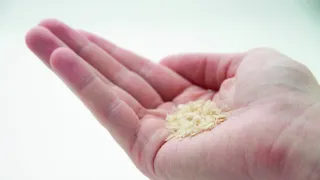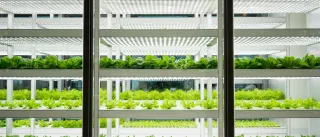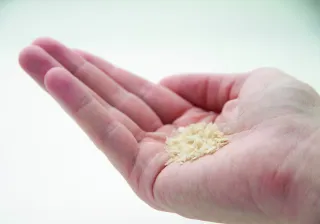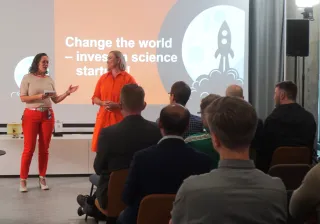Protein is being produced without crop farming or methane-generating livestock in the Academy of Finland Neo-Carbon Food project run by VTT. In practice, the process uses carbon dioxide as a carbon source and electricity as an energy source, with edible microbes being grown in an aqueous solution.
The idea emerged in connection with space exploration in the 1960s, when researching how to cultivate food on places such as Mars.
Methane generated by the agricultural production chain is a major greenhouse gas, and therefore also a major cause of climate change. Principal Scientist Juha-Pekka Pitkänen of VTT explains the purpose of the project, which is to show that edible nourishment can be produced without burdening the environment.
– Protein can be produced without photosynthesis and the climate-change impacts of agriculture. Additionally, some of the protein would be used for animal feed, enabling the agricultural sector to focus on feeding people, he adds.
Principal Scientist Juha-Pekka Pitkänen of VTT explains the purpose of the project, which is to show that edible nourishment can be produced without burdening the environment.
The product, which is structurally similar to dry yeast, is around 50 percent protein at this stage of the research project, and it takes around two weeks to create one gramme. One million kilograms a year would suffice to make the project profitable, but further processing would be required for food production of that amount.
Solar Foods Ltd, which was established for the project in November 2017, has received venture capital investment in January 2018. Both Pitkänen and Docent Pasi Vainikka, another Principal Scientist from VTT involved in leading the project, know that there is interest in it. In addition, Business Finland granted Solar Foods a loan for development and piloting.
– Food concerns everyone. That is why it is easy to explain the issue to financiers. Now that the company is established and having secured an R&D loan, we can really get down to business, they declare enthusiastically.
The company will launch its carbon-dioxide free protein product no later than 2021, but intends to get it into production earlier than that. Market entry requires approval by the EU's Novel Food authorisation process. Via this process, the product can be approved as a food-grade substance on the basis of certain testing and certification procedures. In anticipation of gaining the authorisation, the company's founders have already created a roadmap for the next three years.
– The authorisation process will begin this year. To this end, we need a food protein product, for which the company will invest in pilot equipment.
– The intention is to start up the first factory for the large-scale production of the protein product in 2021. Food production could actually begin within a couple of years from now. In addition, we will try to map out various other options for growing the company's business, says Vainikka.
Pasi Vainikka believes it likely that efforts will be made to make food consumption more efficient by personalising and individually tailoring it in some way or other.
Alternative protein sources are a growing trend
Because food is big business, it is difficult to set a limit on the potential growth of Solar Foods. Tofu and Quorn are the biggest competitors for Solar Foods' protein product, which is intended as a substitute for meat.
– We know that their sales are worth around four billion euros a year. The sector is new, there are large numbers of vegetarians and demand keeps growing; on this basis, I can predict sales growth of seven percent a year. We have no doubt that the market is large enough for a new player, comments Vainikka.
However, he also points out that, since the Finnish market is not sufficiently large, it is not Solar Foods' main goal.
Technology will democratise the food supply
Famine is a manifestation of inequality. Because 30% of the global population eats too much and 30% eats too little, while only 40% eats moderately, there is a problem in matching food with consumers.
In places where famine is caused by low food production due to environmental conditions, this can only be affected by making products locally. Vainikka believes that famine can be significantly reduced by exporting Solar Foods' technology to such areas.
– However, this is where realism comes in: the technology must be bought first, but who will pay if the population can't even afford bread or flour? asks Vainikka.
– Solar Foods can genuinely help with this, since our technology does not need arable land, but can run in dry regions where solar energy is available.
Solar Foods's protein is fully competitive with other sources of protein on the market. Vainikka estimates that the product price will be the same level as for other foods on the markets.
Strategically speaking, Solar Foods' product and manufacturing process differ from conventional protein production and preparation by being a kind of 'landless agriculture', sums up Vainikka.
– To have a significant impact on environmental issues, you have to eliminate the impacts of land use. No turning forests into fields, allowing fertilisers and drainage water to enter water bodies, or releasing greenhouse gases into the atmosphere. We need to change this basic setup in some way, he insists.
That's precisely what Solar Foods is doing: a closed-loop technology with protein generated by cutting-edge tech, rather than depending on soil and its properties.
Looking even further into the future, Vainikka believes it likely that efforts will be made to make food consumption more efficient by personalising and individually tailoring it in some way or other. Regarding protein, this could be done in the same way as in conventional agriculture, where the genetic modification of plants and cells is already routine.
– Of course, some utterly different way of creating personalised nutrition could emerge, as more data is gathered on individual eating habits and characteristics, Vainikka predicts.
Future developments may include customising your diet to match the characteristics of your intestinal tract!





